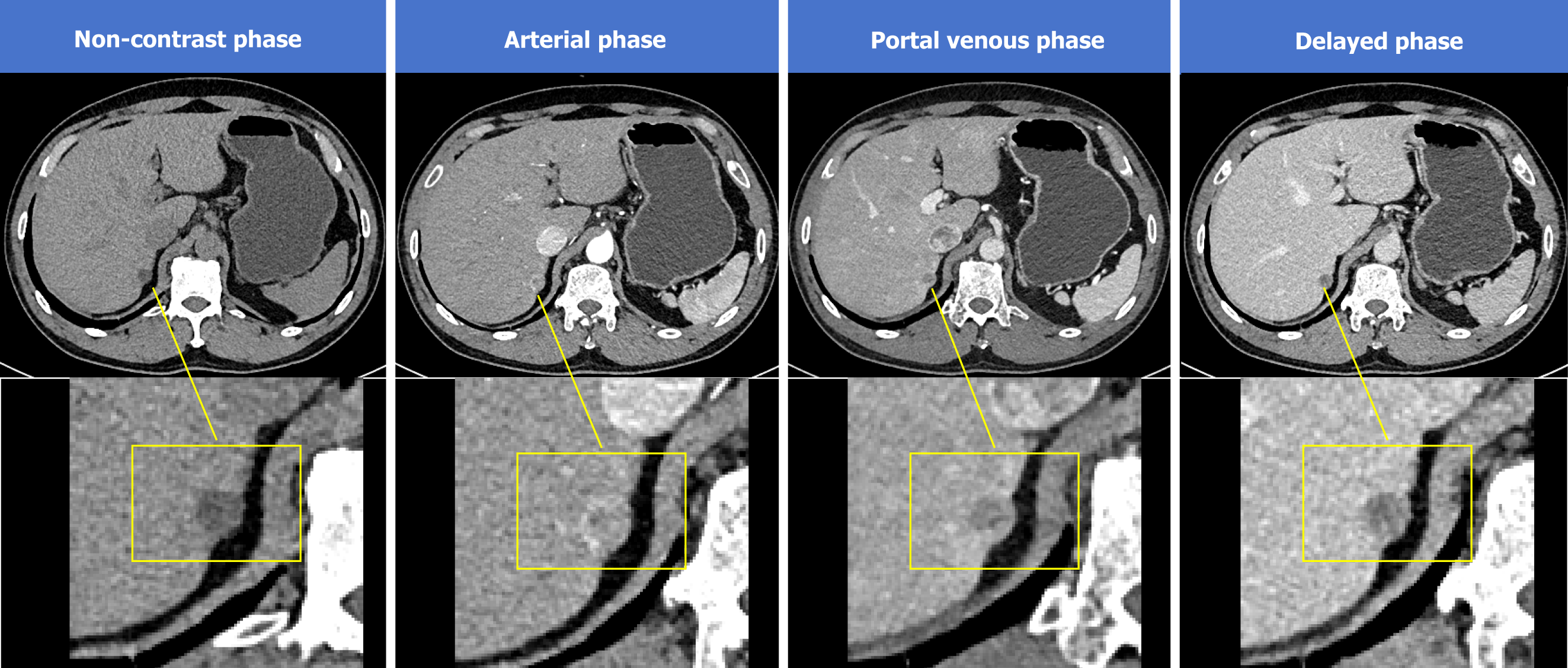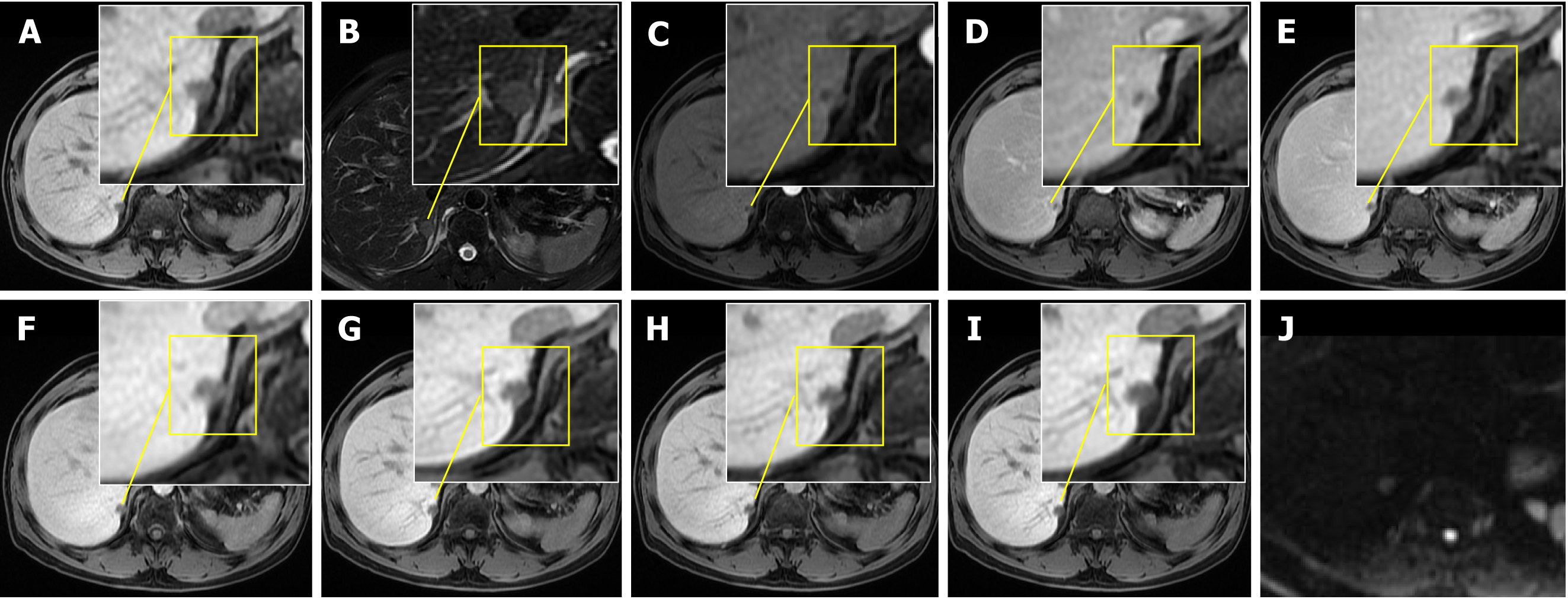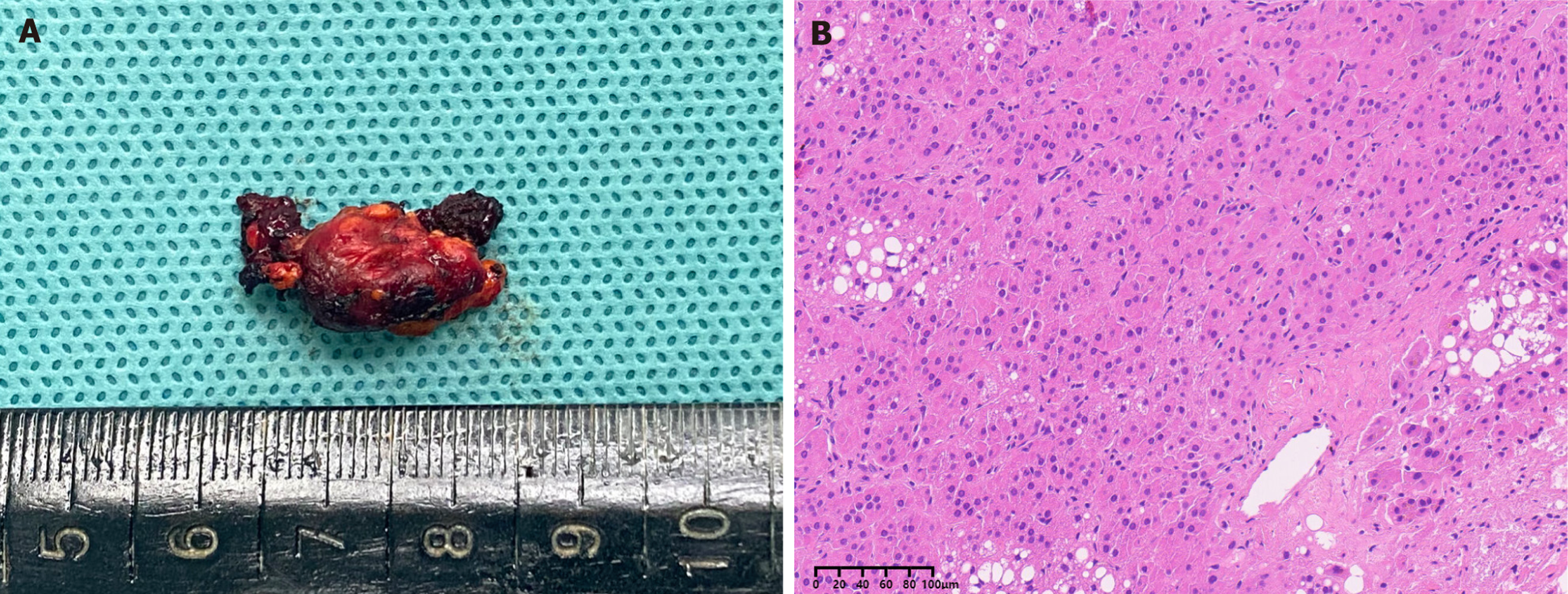Copyright
©The Author(s) 2025.
World J Hepatol. Aug 27, 2025; 17(8): 108443
Published online Aug 27, 2025. doi: 10.4254/wjh.v17.i8.108443
Published online Aug 27, 2025. doi: 10.4254/wjh.v17.i8.108443
Figure 1 Computed tomography imaging.
A nodular hypodense lesion was observed in segment 7 of the liver, approximately 12 mm in diameter, with well-defined borders. The lesion indicated significant heterogeneous enhancement in the arterial phase, mild attenuation in the portal phase, and marked attenuation in the delayed phase.
Figure 2 Abdominal enhanced magnetic resonance imaging.
A-J: A nodular lesion with slightly prolonged T1 and T2 signals was identified in segment 7 of the liver. The lesion exhibited well-defined borders and measured approximately 12 mm in diameter. Early-phase and portal-phase imaging indicated peripheral enhancement, which decreased in the delayed phase. In the 5-minute/10-minute/15-minute/20-minute post-contrast hepatobiliary phase (F-I), the lesion exhibited no contrast uptake. The lesion demonstrated slightly high signal intensity on diffusion-weighted imaging (J) and low signal intensity on the apparent diffusion coefficient map.
Figure 3 Tumor pathology.
A and B: Surgical specimen (A) and hematoxylin and eosin staining, × 5.23 (B).
- Citation: Qin MQ, Zhao YP, Xie JP. Ectopic adrenal gland in the liver leading to a misdiagnosis of hepatocellular carcinoma: A case report. World J Hepatol 2025; 17(8): 108443
- URL: https://www.wjgnet.com/1948-5182/full/v17/i8/108443.htm
- DOI: https://dx.doi.org/10.4254/wjh.v17.i8.108443











